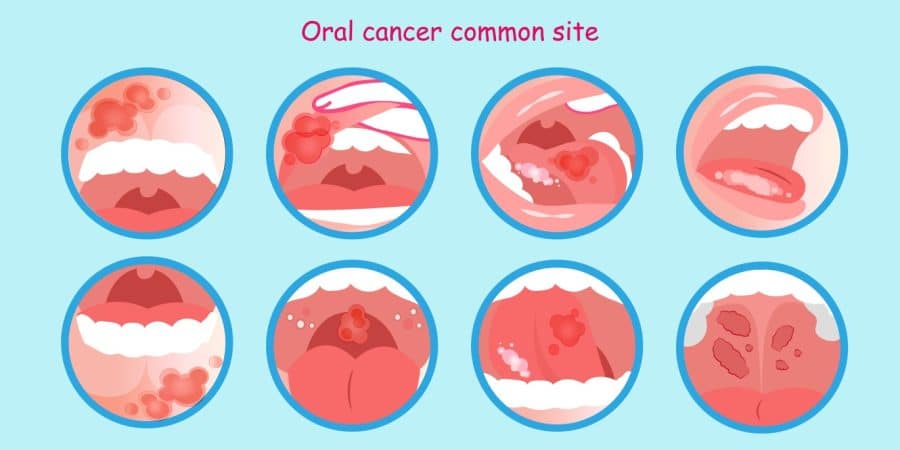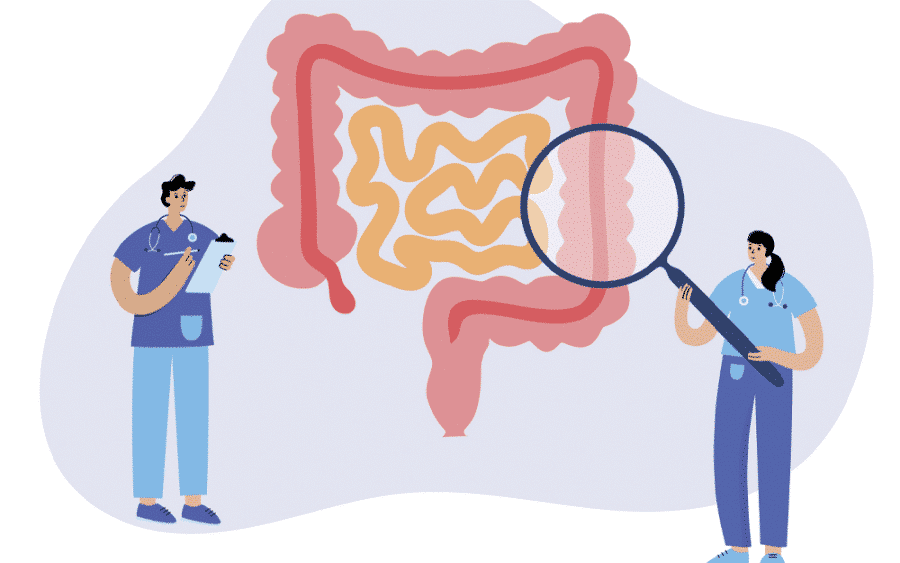Oral cancer is a serious health concern that affects thousands of individuals worldwide each year. Early detection of this disease and regular oral cancer screenings are highly important in successful patient outcomes and maintaining good oral health.
By familiarizing yourself with the various oral cancer screening options, you'll be better equipped to discuss them your oral health care provider and make informed decisions about your screening regimen.
Complications Oral Cancer Can Cause
Oral cancer can potentially lead to various oral health issues and potential complications which emphasizes the importance of early detection and regular screenings.
Here are some of the oral issues that oral cancer can cause:
Tooth Loss
Oral cancers can cause damage to the tissues and bone structures that support teeth. As the cancer progresses and destroys these structures, teeth may become loose and fall out. In some cases, teeth may need to be removed surgically as part of the treatment process.
Read the following article on the connection between missing teeth and your oral health to see how missing teeth can negatively impact your overall health.
Difficulty Swallowing (Dysphagia)
Oral cancers, especially those affecting the throat or back of the mouth, will interfere with swallowing food or liquids, a condition known as dysphagia.
Speech Impairment
Oral cancer can affect speech. Cancers affecting the tongue, lips, or palate will particularly impact word articulation and overall speech clarity.
Chronic Pain
Oral cancer will often cause persistent pain in the mouth or facial area that could be localized to the tumour site or radiate to surrounding areas.
Altered Taste Sensation
Oral cancer can damage taste buds and/or affect the nerves responsible for taste and can lead to changes in how food tastes or even a complete loss of taste.
Dry Mouth (Xerostomia)
Radiation therapy for oral cancer can damage the salivary glands and lead to reduced saliva production. This condition known as xerostomia or dry mouth, can increase the risk of tooth decay and make eating and speaking difficult.
Facial Disfigurement
In advanced cases or following surgical treatment, oral cancer can lead to changes in facial appearance, including visible lumps, scars, or alterations in facial structure, all of which will have significant psychological impacts.
Nutritional Deficiencies
Due to difficulties with eating and swallowing, individuals with oral cancer will experience nutritional deficiencies. This will impact overall health and potentially complicate cancer treatment.
The Importance of Regular Checkups
Regular dental check-ups help preventing these oral issues and provide screening for oral cancer. If you have any concerns about your oral health or notice any unusual changes in your mouth, immediately consult with a dentist or oral health professional.
Early detection of oral cancers will significantly improve outcomes and reduce the risk of the above-mentioned complications.
Advancements in Medical Technology
In recent years, advancements in medical technology have led to the development of diverse screening techniques with their own strengths and applications. These methods range from traditional visual screenings and tactile examinations to more sophisticated imaging and molecular tests.
The methods covered are as follows:
- Visual and tactile examination
- Advanced imaging techniques
- Molecular and biomarker tests
Visual and Tactile Screening Examination
The visual and tactile examination is the foundation of oral cancer screening. This method involves a thorough inspection of your oral cavity, and the head and neck regions of the body.
Visual Inspection
During a visual inspection, your dentist or healthcare provider will carefully examine your lips, gums, cheeks, tongue, palate, and throat. They will look for any abnormalities such as:
- Red or white patches
- Sores or ulcers that don't heal
- Lumps or thickened areas
- Changes in color of oral tissues
- Changes in the texture of oral tissues
Tactile Examination
The tactile examination complements the visual inspection and is usually applied after it. Your provider will use their hands to palpate your face, jaw, and neck, feeling for any unusual lumps, swellings, or obvious asymmetries.
These examinations are typically performed during routine dental check-ups and makes them easily accessible and non-invasive. Regular screenings will allow your provider to detect any changes in your oral health over time and to potentially catch issues in their early stages.
Toluidine Blue Staining
This technique involves applying a blue dye to the oral tissues. Potentially cancerous or precancerous areas will retain the dye and appear as dark blue stains, while normal tissues will not. This method helps identify areas that require further investigation.
Chemiluminescence
This screening method uses a specially designed light stick to illuminate the oral cavity. After rinsing with a mild acetic solution, abnormal tissues will appear as distinct white patches against the darker appearance of healthy tissue.
Advanced Imaging Screening Techniques
Modern screening technology has introduced several advanced imaging techniques that increase the ability to detect oral abnormalities. These methods provide very detailed views of oral tissues and allow for more precise examinations and diagnosis.
Fluorescence Visualization
Fluorescence visualization uses a specific wavelength of light to illuminate the oral tissues. The healthy tissue will appear differently from potentially abnormal areas and help to identify suspicious regions that are not visible to the naked eye.
The light source is emitted through a handheld device that emits a high-energy blue light with a wavelength of around 400-460 nanometers. When this blue light shines on oral tissues, it causes certain molecules in the cells to fluoresce or glow. These molecules (called fluorophores) are naturally present in oral tissues.
In healthy tissue the fluorescence will appear as a pale green or blue-green color, but in abnormal tissues (such as precancerous or cancerous lesions) the tissue will absorb more light and appear darker.
This method works because cancerous and precancerous tissues often have different metabolic and structural properties compared to healthy tissues which affects how they interact with and emit light. There are several systems on the market that use this technology, such as VELscope, Identafi, and OralID.
Fluorescence visualization is non-invasive, painless, and takes only a few minutes to examine the entire oral cavity.
Narrow Band Imaging
Narrow band imaging uses specific wavelengths of light that enhance the visibility of mucosal and submucosal blood vessels. Changes in these vascular patterns can indicate areas of concern to the dentist, that will require further investigation.
X-rays and Oral Cancer
While primarily used for detecting dental issues, x-rays will also reveal bone abnormalities that might be associated with oral cancer. Regular dental x-rays contribute to comprehensive oral health monitoring.
Optical Coherence Tomography (OCT)
OCT uses light waves to produce detailed, cross-sectional images of oral tissues. This is a non-invasive imaging technique that will detect abnormal tissue architecture that's associated with early-stage oral cancer.
Advanced 3D Imaging
Three-dimensional imaging techniques, such as cone beam computed tomography (CBCT), provide detailed views of oral and maxillofacial structures. These images can help in assessing the extent of any abnormalities and aid in treatment planning.
Optical Coherence Tomography (OCT)
OCT uses light waves to produce detailed, cross-sectional images of oral tissues. This non-invasive imaging technique will detect abnormal tissue architecture associated with early-stage oral cancer.
These Techniques Are Valuable to Traditional Visual Examinations
Advanced imaging techniques are valuable additions to traditional visual examinations because they help your healthcare provider identify subtle changes that might otherwise go unnoticed, and potentially lead to earlier detection and improved treatment outcomes.
Molecular and Biomarker Tests
Molecular and biomarker tests are the cutting edge of oral cancer screening. These methods analyze cellular and genetic material to detect markers associated with oral cancer. By identifying specific molecular signatures or genetic alterations linked to oral cancer development, they increase the chance of earlier and more precise detection before visible changes occur in the oral tissues.
Oral Cancer Blood Tests
While still in development, researchers are working on blood tests that can detect certain biomarkers associated with oral cancer. These tests aim to identify oral cancer at very early stages or even before visible symptoms appear.
Brush Cytology
In brush cytology, cells are collected from suspicious areas using a small brush. They are then examined under a microscope to detect any abnormalities that may indicate precancerous or cancerous changes. This technique is useful for evaluating lesions that appear benign because it detects cellular changes that are not visible to the naked eye and helps identify early-stage oral cancers or precancerous conditions.
Exfoliative Cytology
This method involves collecting cells from the oral cavity and using a small wooden or plastic spatula instead of a brush. The collected cells are then examined under a microscope for any abnormalities.
Salivary Diagnostics
Salivary diagnostics involve analyzing a sample of your saliva for specific biomarkers linked to oral cancer. This non-invasive method will provide valuable information about your oral health at a molecular level.
These tests typically screen for a diverse array of biomarkers, including:
- Proteins such as interleukins, growth factors, and enzymes
- Nucleic acids including DNA and various types of RNA (mRNA, miRNA)
- Metabolites which are small molecules resulting from cellular processes
- Certain hormones may indicate of oral cancer risk (e.g., cortisol, testosterone, dehydroepiandrosterone)
- Immunoglobulins which are specific antibodies related to immune response
- Electrolytes balance changes may indicate cellular abnormalities
- Alterations in oral microbiome composition
- Exosomes which are small vesicles containing cellular material
- Actual tumour cells
These biomarkers (either individually or in combination) will indicate the presence of cancerous or precancerous cells even before they're detectable through a visual examination. The specific group of biomarkers analyzed will depend on the test being used and the current state of research in oral cancer diagnostics.
Detecting Before Visible Changes Occur
Molecular and biomarker tests offer a high level of precision that complements traditional screening methods and detects cancer-related markers before visible changes occur. These tests will potentially lead to even earlier diagnosis and intervention options.
Take Action for Your Oral Health
By understanding the various methods for oral cancer screening, you can discuss the screening options available and determine which methods are most appropriate for your individual needs. Early detection is key so regular screenings, combined with a healthy lifestyle, will significantly improve your chances of maintaining excellent oral health for years to come.


